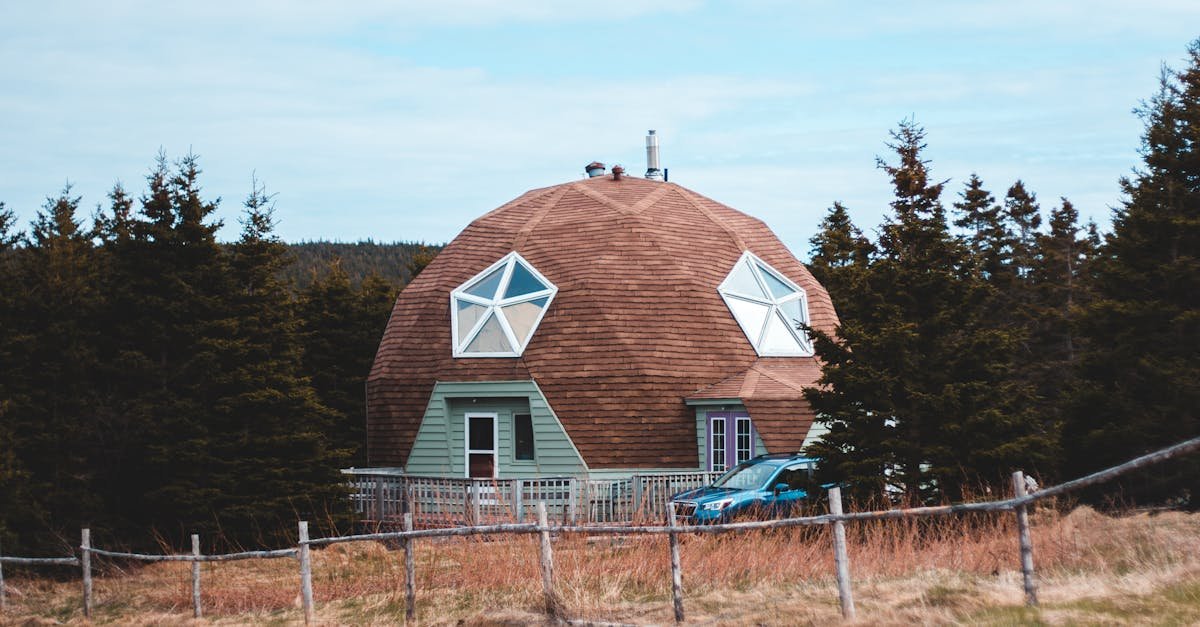Eco-friendly Construction Practices
Sustainable building practices focus on reducing waste and minimizing environmental impact throughout the construction process. Many tiny homes utilize prefabricated components, which allows for more efficient use of materials and reduces leftover scraps. The compact nature of these homes means that less land is needed for their placement, which also preserves undeveloped landscapes and promotes ecological balance.
In addition to minimizing waste, builders often prioritize local sourcing of materials. This approach not only supports local economies but also decreases transportation emissions associated with delivering materials from far-off locations. Implementing designs that harness natural light and airflow reduces the need for artificial heating and cooling systems, contributing further to sustainability. By integrating these practices, tiny home construction aligns more closely with eco-conscious living principles.
Continue reading this article for more information.
Sustainable Building Materials
Many tiny homes utilize sustainable building materials that minimize environmental impact. Reclaimed wood, for instance, offers an attractive alternative to newly harvested timber. It reduces deforestation while adding character and history to the structure. Additionally, materials such as bamboo, which grows rapidly and can be harvested sustainably, are increasingly popular due to their durability and eco-friendly qualities.
Other innovative options include recycled metal and glass, both of which can be transformed into stylish elements without depleting natural resources. Insulation made from natural fibers like sheep’s wool or cellulose not only improves energy efficiency but also contributes to healthier indoor air quality. Choosing these materials not only supports sustainable practices but also promotes long-term resilience in housing solutions.
Off-Grid Living Capabilities
Many tiny homes are designed to function independently of traditional utility systems. This independence allows occupants to manage their resources effectively without relying on municipal services. By integrating water collection systems, such as rainwater harvesting, residents can obtain clean water sustainably. Additionally, compact homes often incorporate composting toilets, reducing reliance on conventional sewage systems and minimizing waste.
The ability to harness renewable energy sources further enhances off-grid living. Solar panels are commonly installed to generate electricity, allowing homeowners to power their appliances while reducing their carbon footprint. Wind turbines can also be used in suitable locations to supplement energy needs. These systems combined offer a self-sufficient lifestyle that aligns with the principles of sustainability, enabling tiny home dwellers to live harmoniously with their environment.
Utilizing Renewable Energy Sources
Tiny homes often integrate renewable energy sources, which contribute significantly to their sustainability. Many of these homes incorporate solar panels, allowing occupants to harness energy directly from the sun. This reduces reliance on fossil fuels, ultimately leading to a smaller carbon footprint. Wind turbines can also provide an additional energy source in suitable locations, further diversifying the energy supply for residents.
Incorporating geothermal systems is another popular approach among tiny home dwellers. These systems utilize the Earth’s constant temperature to regulate heating and cooling, resulting in lower energy costs and increased efficiency. Rainwater harvesting systems are frequently used to capture water runoff, which can be filtered for potable use or used for irrigation. Such methods exemplify how tiny homes not only minimize energy consumption but also promote a lifestyle in harmony with nature.
Community and Shared Resources
Tiny homes have the potential to foster a sense of community that traditional housing often lacks. Residents frequently embrace collaborative living models, sharing resources such as tools, appliances, and even gardens. This shared approach not only reduces individual consumption but also strengthens social ties among neighbors. By engaging in communal activities, inhabitants cultivate a supportive network, enhancing their living experience while lowering the overall environmental impact.
This model of living promotes the idea that sharing can be a sustainable alternative to ownership. Communities may establish systems for sharing items and services, making everything from transportation to community events more accessible. Such practices help minimize waste and energy consumption while creating a sense of belonging. By relying on one another for various needs, residents become more attuned to their environment and the importance of sustainable living, reinforcing the benefits of community-focused approaches.
Collaborative Living Models
Collaborative living models effectively promote resource sharing and reduce individual consumption. By grouping tiny homes in communal settings, residents can benefit from shared facilities such as kitchens, gardens, and recreational spaces. This arrangement fosters a sense of community while alleviating the pressure on personal resources. Such spaces can also be designed to encourage social interactions, allowing residents to build relationships and support networks.
Many eco-villages and co-housing initiatives have embraced these collaborative approaches. Sustainable practices become amplified through collective decision-making processes. Residents often work together on projects like maintaining shared gardens or organizing community events, which enhances participation and investment in their shared environment. This teamwork not only fosters sustainability but also creates a vibrant community where individuals feel connected and supported.
FAQS
What makes tiny homes more eco-friendly compared to traditional homes?
Tiny homes are more eco-friendly because they use fewer materials for construction, generate less waste, and often incorporate sustainable building practices that minimize their environmental impact.
What are some sustainable building materials commonly used in tiny homes?
Common sustainable building materials for tiny homes include reclaimed wood, bamboo, recycled metal, and environmentally friendly insulation options like sheep’s wool or recycled denim.
How can tiny homes support off-grid living?
Tiny homes can support off-grid living by utilizing compact designs that require less energy, incorporating water catchment systems, and allowing for the integration of solar panels and other renewable energy sources.
What renewable energy sources can be used in tiny homes?
Tiny homes can utilize various renewable energy sources, including solar panels, wind turbines, and biogas systems, which help reduce reliance on conventional power grids.
How do tiny homes promote community and shared resources?
Tiny homes often encourage community living through cooperative housing arrangements or tiny home villages, where residents share resources like gardens, tools, and communal spaces, fostering a sense of togetherness and reducing overall consumption.
Related Links
Off-Grid Living with Tiny Houses: Essentials for Sustainability
How can living in a tiny house help with your carbon footprint?
How much does it cost to build a tiny house off-grid?
How can we live sustainably off the grid?
What are the biggest drawbacks of living in a tiny house?
Could tiny homes be the adorable affordable and sustainable housing that our planet needs?



